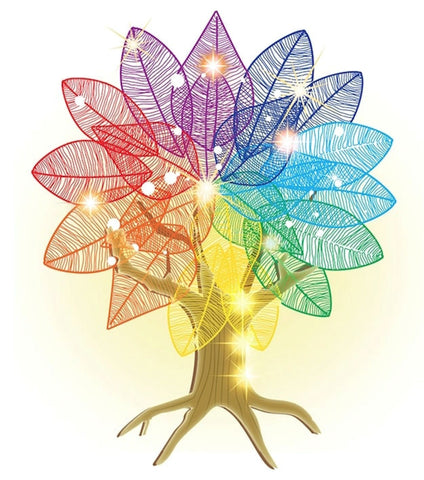THE SACRAL CHAKRA
The sacral chakra is the second chakra. It is associated with the emotional body, sensuality, and creativity. Its element is water and as such, its energy is characterized by flow and flexibility. The function of the sacral chakra is directed by the principle of pleasure. Let’s have a look at this energy center’s basics, including its location, color, symbol, potential signs of imbalance, and what to do heal your sacral chakra.
The most common location for the sacral chakra is about three inches below the navel, at the center of your lower belly. In the back, it’s located at the level of the lumbar vertebrae. Other noteworthy locations described in different systems, expand its location to the genital area, especially at the level of ovaries for women and the testicles for men. It is associated with the lymphatic system.
The symbol of the sacral chakra is composed of:
The sacral chakra is the second chakra. It is associated with the emotional body, sensuality, and creativity. Its element is water and as such, its energy is characterized by flow and flexibility. The function of the sacral chakra is directed by the principle of pleasure. Let’s have a look at this energy center’s basics, including its location, color, symbol, potential signs of imbalance, and what to do heal your sacral chakra.
The most common location for the sacral chakra is about three inches below the navel, at the center of your lower belly. In the back, it’s located at the level of the lumbar vertebrae. Other noteworthy locations described in different systems, expand its location to the genital area, especially at the level of ovaries for women and the testicles for men. It is associated with the lymphatic system.
The symbol of the sacral chakra is composed of:
- A circle with six petals
- A moon crescent
The sacral chakra is associated with the following psychological and behavioral functions:
- Emotions, feelings
- Relationships, relating
- Expression of sexuality, sensual pleasure
- Feeling the outer and inner worlds
- Creativity
- Fantasies

The second chakra is instrumental in developing flexibility in our life. Associated with the water element, it’s characterized by movement and flow in our emotions and thoughts. It supports personal expansion and the formation of identity through relating to others and to the world.
When the sacral chakra is balanced, the relationship with the world and other people is centered around nurturing, pleasure, harmonious exchange.
Imbalance in the sacral chakra can manifest as:
The most common Sanskrit name for the sacral chakra is “Svadhisthana”, which means “your own place”.
The sacral chakra is most commonly represented with the color orange. However, since it’s associated with the element of water, it could also take the color of very light blue or white in more rare occasions. The orange of the second chakra is translucent and has a transparent quality.
- Dependency, co-dependency with other people or a substance that grants you easy access to pleasure
- Being ruled by your emotions
- The opposite: Feeling numb, out of touch with yourself and how you feel
- Overindulgence in fantasies, sexual obsessions
- Or the opposite: Lack of sexual desire or satisfaction
- Feeling stuck in a particular feeling or mood
The most common Sanskrit name for the sacral chakra is “Svadhisthana”, which means “your own place”.
The sacral chakra is most commonly represented with the color orange. However, since it’s associated with the element of water, it could also take the color of very light blue or white in more rare occasions. The orange of the second chakra is translucent and has a transparent quality.



